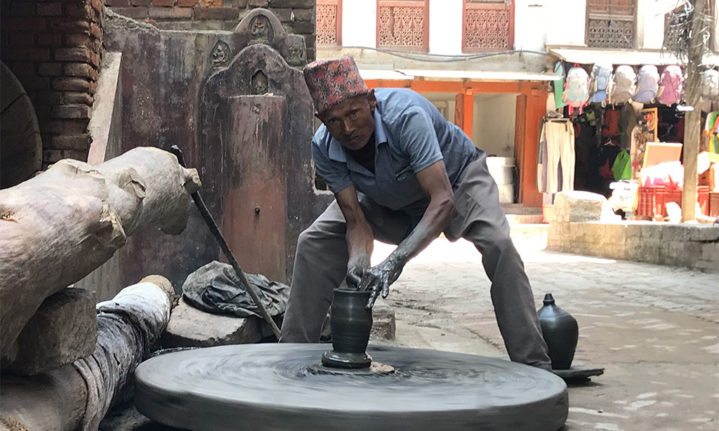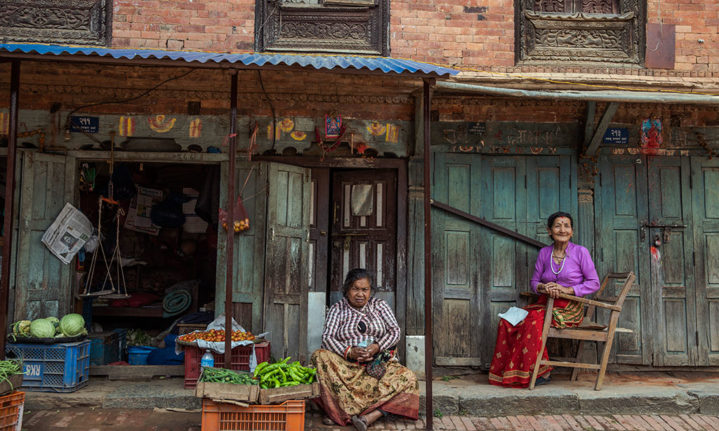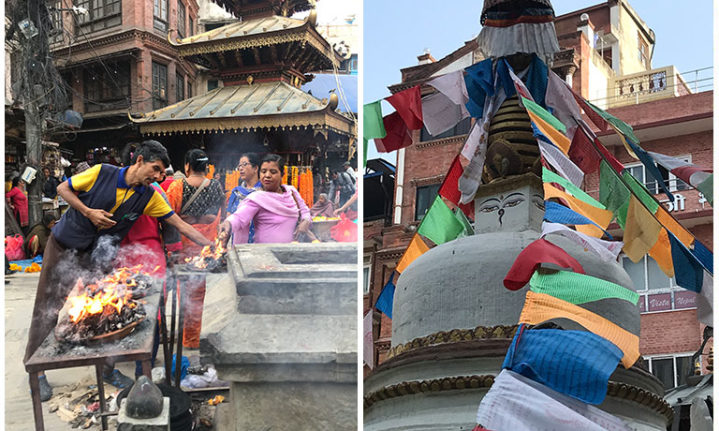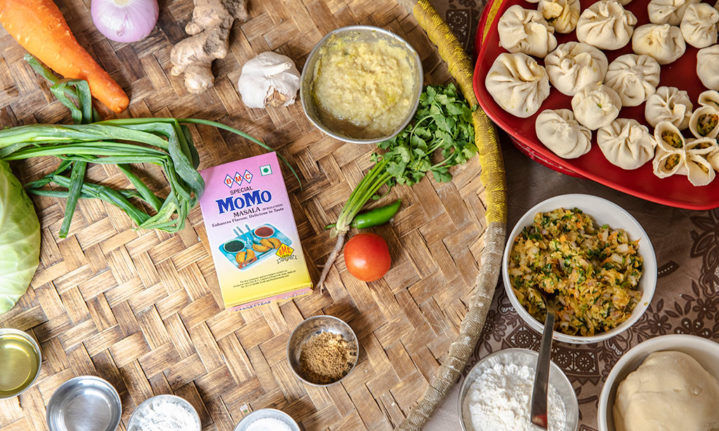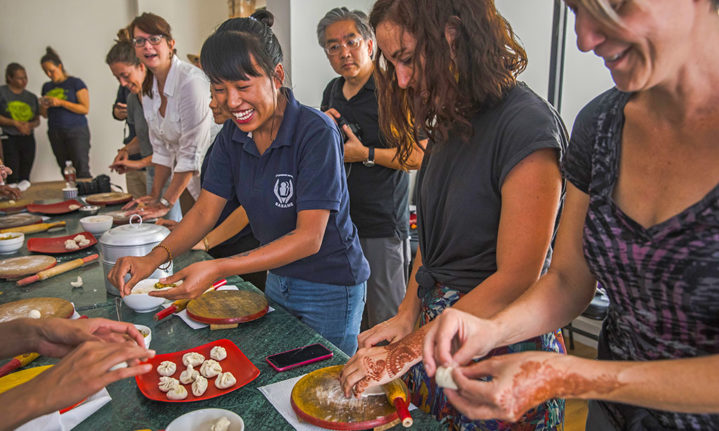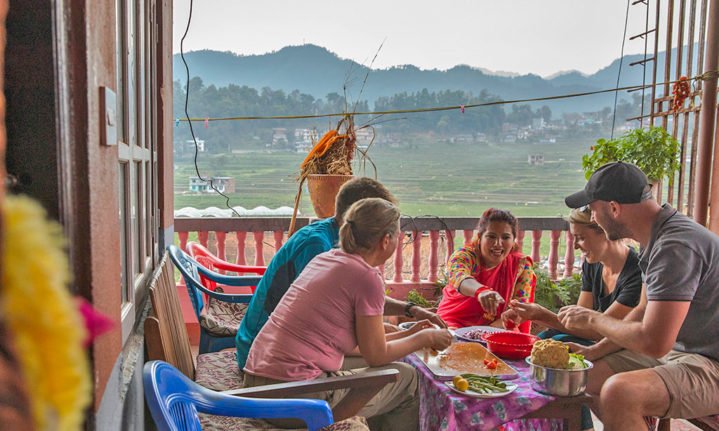‘Do you know why this wall features the tiled images of gods and goddesses from all religions?’ our guide Asif from the Salaam Baalak Trust asked as we wandered the backstreets of Delhi.
We looked at the colourful images of Jesus, Ganesha, Shiva and Vishnu set along a narrow alleyway connecting two rather busy market streets – a quiet, clean oasis in the cacophony that is surrounding Delhi.
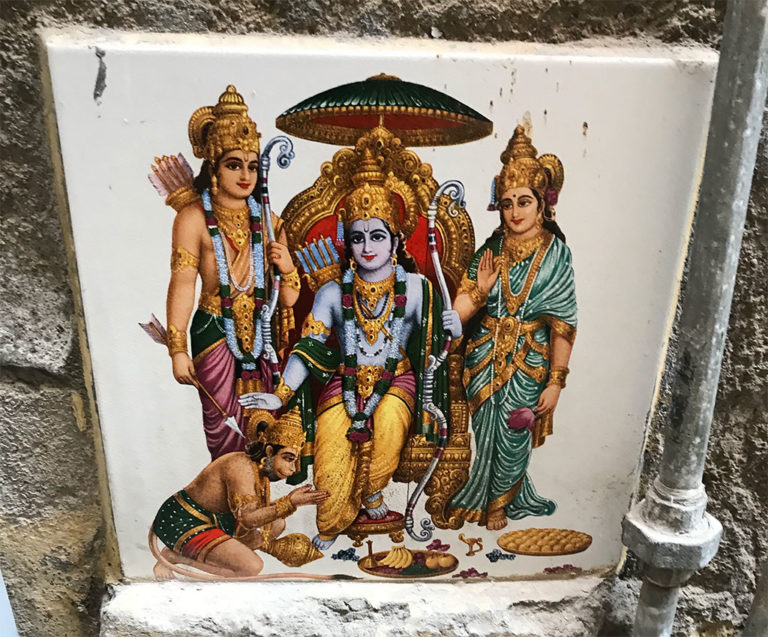
A tile on a wall in Dehli featuring watchful gods and goddesses. Image credit: Natalia Rosia
Turns out, in a stroke of genius, the local community realised people would be ashamed to urinate in front of their ‘god’ and would stop using the alleyway as a toilet. The result was so effective, I wondered if it wasn’t something the local municipality would do well to roll out to the rest of this busy city of over 25 million people.
Asif is one of its residents – a youngster who at the age of eight joined the thousands of kids who live on Delhi’s streets begging for money, collecting rubbish to sell for recycling and even pickpocketing. After six years of living rough, he joined an organisation called Salaam Baalak Trust which runs walking tours in the area surrounding Delhi’s central train station.
Thousands of Delhi street kids have benefited from the second chance afforded them by Salaam Baalak Trust. They’ve been rehabilitated, returned home, received training and even found jobs – the lucky ones, in tourism.
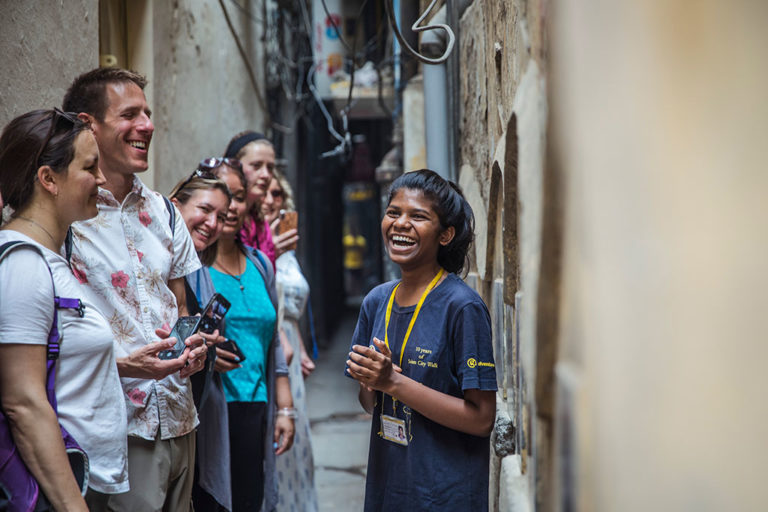
New Delhi’s Salaam Baalak Trust City Walk Tour. Image credit: Oana Dragan 2019
Asif was one of several beneficiaries of tourism I met during a whistle-stop tour of Delhi, Agra and Kathmandu with G Adventures – a visit that had at its core the concept of travel being used as a force for good.
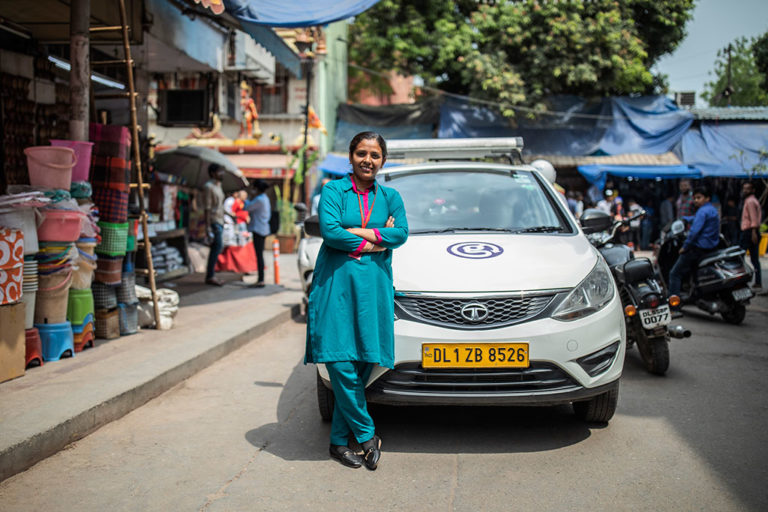
A Women on Wheels driver in New Dehli. Image credit: Onana Dragan
From being picked up at the airport by feisty Lalita from Women on Wheels, a social enterprise employing women as taxi drivers, to making delicious momos in Kathmandu with the women of Sasane (Sisterhood of Survivors) who have escaped from trafficking, this visit was all about achieving a win-win, not only for the thousands of travellers who come to India and Nepal with G Adventures to enjoy a holiday, but also for the local communities who are directly benefiting from their visit.

Making momos. Image credit: Oana Dragan 2019

Momo ingredients. Image credit: Oana Dragan 2019
The Ripple Score, that is, the percentage of money that stays local as a result of any trip, is high. That’s good travel. That’s travel where everybody wins. Not all travellers think how much money is staying in the destination they visit or how the locals are benefiting from their holiday. The reality is, people don’t want to hear about poverty when they travel. But your travel can benefit local communities directly when you use local businesses. It’s that simple.
Back to dusty Delhi where the mercury had shot past 40℃ and every vehicle, it seemed, was jostling for airtime and a spot in the Tuk Tuk sandwich.
‘Driving in India is a bit like playing computer games,’ explained Negy, our driver, as we dodged left and right slotting into impossible spots like Tetris blocks alongside elegant-sounding city landmarks like Connaught Place and Chelmsford Road to the sounds of incessant honking.
I thought back to Lalita who could barely see over her steering wheel and had a sudden burst of admiration for these new-generation women, who are changing the face of India and the fortune of their families. She was a dab hand at honking her way through Delhi traffic.
There was more women power and ripples to come as we joined the women of Panauti in the Kathmandu Valley for a crash-course in Newari cooking in their homes. Sarmila was only too happy to share her Fried Bitter Gourd recipe and teach us how to drink the locally brewed moonshine, raksi, straight from the jug. You get extra points if there’s no spillage.
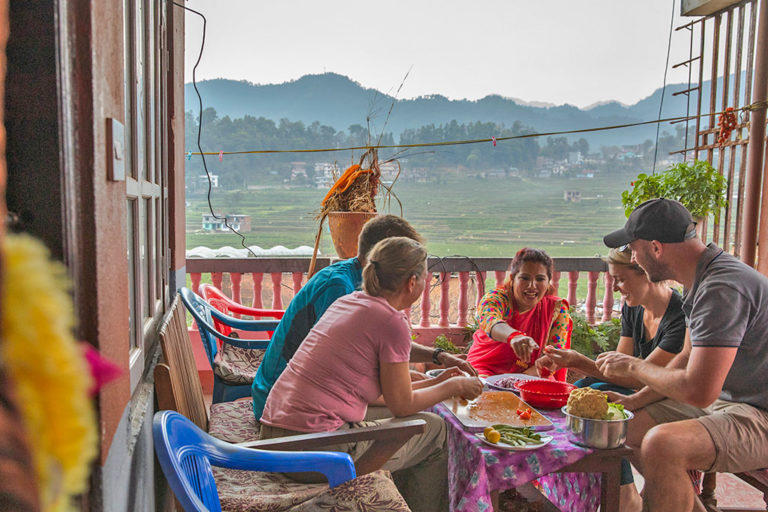
A Nepal Panauti community homestay group host with visitors. Image credit: Oana Dragan 2019

Image credit: Oana Dragan
Amazingly, the 20 women who today share their Newari culture and cuisine with G Adventures travellers have only recently learned how to speak English. They run a successful community homestay project despite the initial opposition of the local men who once laughed at them for even thinking tourists would come to stay. Some 216 families are now supported through the initiative. And so, the ripple effect of tourism continues.
The Panauti community and in fact most of the residents of Kathmandu Valley are rebuilding their lives four years after an earthquake reduced many homes, temples and palaces to rubble. Bamboo scaffolding is a permanent fixture alongside the chaotic entanglement of power cables that line the streets of the Nepalese capital.
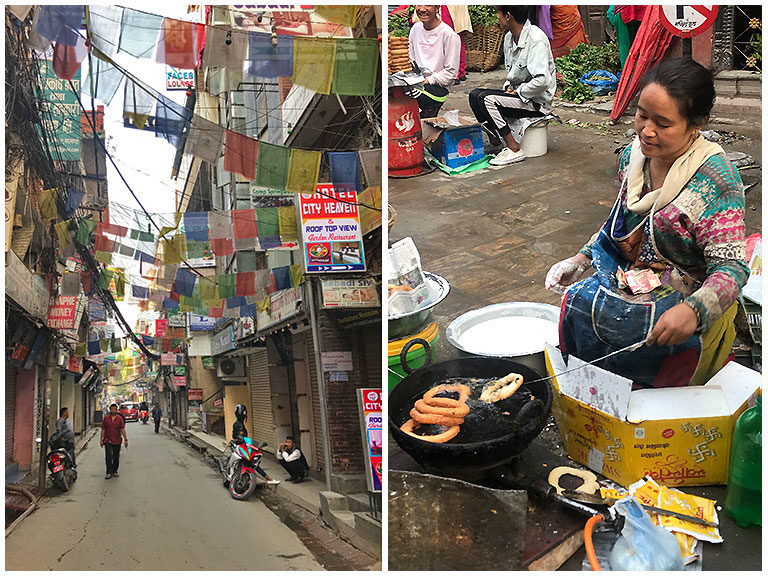
Street scenes in the Kathmandu Valley. Image credit: Natalia Rosia
Take an early-morning stroll through its less-chaotic-than-Delhi streets and see vendors selling steaming sweet tea and sticky Sel Roti to passing customers who stop at the hundreds of shrines that seem to occupy every available spot in the city.
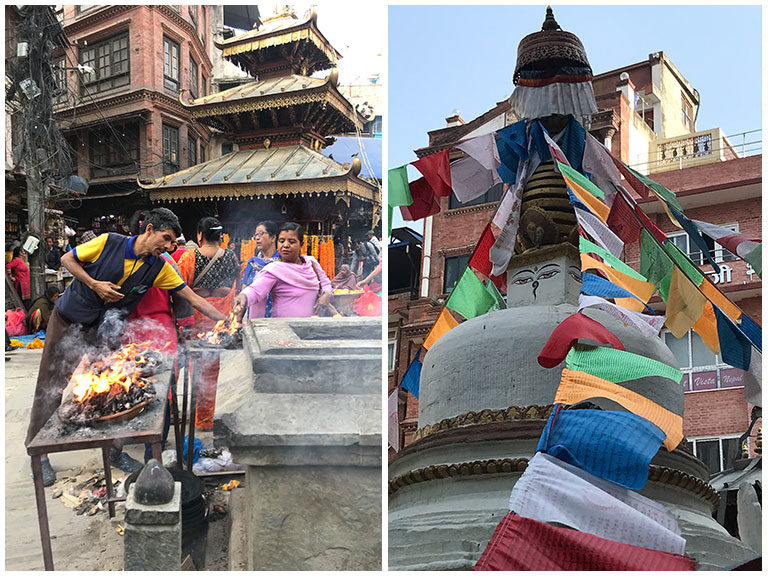
Image credit: Natalia Rosa
Unlike Delhi where deities were keeping the city’s residents on the straight and narrow, in Kathmandu, they’re worshipped on every corner and are an integral part of society. You’re as likely to see a group of teenagers milling about on the stone steps of the temple in the Nepalese capital as you are to see their counterparts in a mall in Johannesburg.
Even the morning’s grocery shop at the market would not be complete without a quick bow, ring of the bell or candlelit ritual along the way.
On our final day in Nepal, we took a drive to Bhaktapur where the devastating impact of the earthquake could still be seen in its Durbar Square – gaping expanses remain where temples and palaces once stood.
A small dog slept between the stone feet of one of the elephant statues lining the staircase of the still-standing Nyatapola Temple, dedicated to the Goddess Shiddhilaxmi. Nearby, a 75-year-old potter was spinning his pottery wheel with the vigour of a young man, the fruits of his labour stacked up for sale to anyone in the market for a terracotta vase or bowl.

Potter. Image credit: Natalia Roos
He smiled and asked how old we thought he was. At the ripe age of 75, he still turns out 40 pots a day and claims to have no back pain. Besides bringing a smile to his face, our visit brought him some business for the day. And so, the ripple effect of tourism, good tourism, continued.
G Adventures is represented by Development Promotions in South Africa.
Text: Natalia Rosa
Images: Natalia Rosa and Onana Dragan









